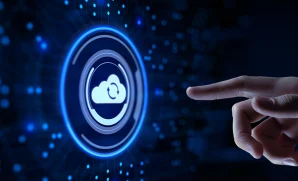In my last blog GST and Manufacturing we have seen how GST is going to change the business landscape in India especially in the manufacturing sector. We broadly discussed the business areas in manufacturing that will get impacted with impending tax regime change and how that will warrant changes to an organization’s IT system especially the SAP ERP operational backbone.
Recently the GST Council and the Union cabinet cleared the crucial Central GST (CGST), Union Territory GST (UTGST) and State GST (SGST) laws along with the compensation law and Integrated GST (IGST) bills. India’s biggest tax reform has now moved a step closer towards implementation.
In this blog we will deep dive into the impact on SAP ERP. Let’s look at the areas impacted in detail.
Business process reengineering
All the tax-related inward and outward processes will require to be reviewed and aligned as applicable to GST requirements. Business processes such as interstate stock transfers, subcontracting, etc. might have to be closely evaluated, since in the proposed GST framework, taxes are also levied on such transfers. In addition to this, the process for tax utilization at the end of the month might also have to be setup as per the new policies. Following points need to be taken into consideration while refining the business processes
- AS-IS assessment of all the impacted business processes.
- Specifics that will impact the organization’s operations and business transactions.
- Impact of GST on the working capital management decisions, especially the process of recording, availing and utilization of tax credits.
Tax configuration
It is likely that tax calculation procedures would require a major change to accommodate the proposed taxation requirements. While making the configuration changes, due consideration should be given, such that the system is not only GST ready, but is also scalable and adaptable to future changes in the Indian financial environment. A unique sequential numbering for outgoing GST invoices may be specified, which needs to be configured as per the directives of the tax authorities.
Master data
Various types of master data such as the chart of accounts, material master, vendor master, customer masters, price masters, etc. may need to be updated as per the new requirements.
Documentation, reporting and printing requirements
Appropriate documentation and reports are expected to be developed based on the regulatory requirements. The necessary changes may also be required in existing forms such as contracts, purchase orders, quotations, invoices, etc.
- Documentation requirements at each step of the business transaction; systems and processes required to help organizations implement GST smoothly should be analysed.
- Control across all levels of transactions and ensuring timely and accurate reporting to various stakeholders should be incorporated.
- The impact on any interfaces with third party tools, if any, should be analysed on a case-to-case basis.
Tax credit
Tax credits from existing deductible taxes such as excise, service tax, VAT, etc. might need to be updated or distributed to the appropriate account as per the directives of the new regime. It will also need following considerations:
- Consolidation of the erstwhile tax structure in the current SAP ERP and other applications to align with the new structure.
- Fundamental changes required in the Procure to Pay (P2P), Order to Cash (O2C), Record to Report (R2R) and other key business processes.
- Key compliance requirements and protocols to ensure those requirements are met.
Partially open transactions
Partially-open transactions (goods received but the relevant invoice has not been booked, or goods issued for sale but customer confirmation receipt pending, etc.) need to be closed or reversed and migrated to the new system.
Migration of open transactions
Open transactions, including contracts, purchase orders and sales orders, will have to be migrated.
Exceptional transactional requirements
Managing the transactional requirements in following cases like return of goods sold or purchased before GST and returned after GST implementation, stock in transit during the cutover activities, etc. will need to be handled.
SAP Solutions for GST
We at YASH, a premier SAP partner, are working closely with leading organizations in India for implementation of GST. YASH consultants and subject matter experts are advising, implementing and supporting organizations in their GST journey.
Harnessing a combination of core tax advisory-business consulting with in-depth technology implementation skills, YASH assists organizations in understanding the impact of GST on enterprise business processes along with changes that need to be incorporated in the SAP landscape.. Our team of expert consultants will implement, train and ensure smooth on boarding to new GST regime. Subsequent to go live, our teams will be available for handholding and supporting as needed.
Adaptability of the SAP ERP: It is important to check the appropriate version, patch level and related aspects of the SAP ERP installed in an enterprise. It is possible that an upgrade may be needed to comply with GST requirements.
Businesses need to adopt a proactive approach in understanding the potential impact of GST on their SAP ERP before the GST Bill becomes a law.
Contact us Today and Get GST Ready with YASH Technologies
Praveen Bhoomraogari is a senior technology professional – Program Manager and Mihir Turakhia is a Senior Indirect Tax Consultant
















